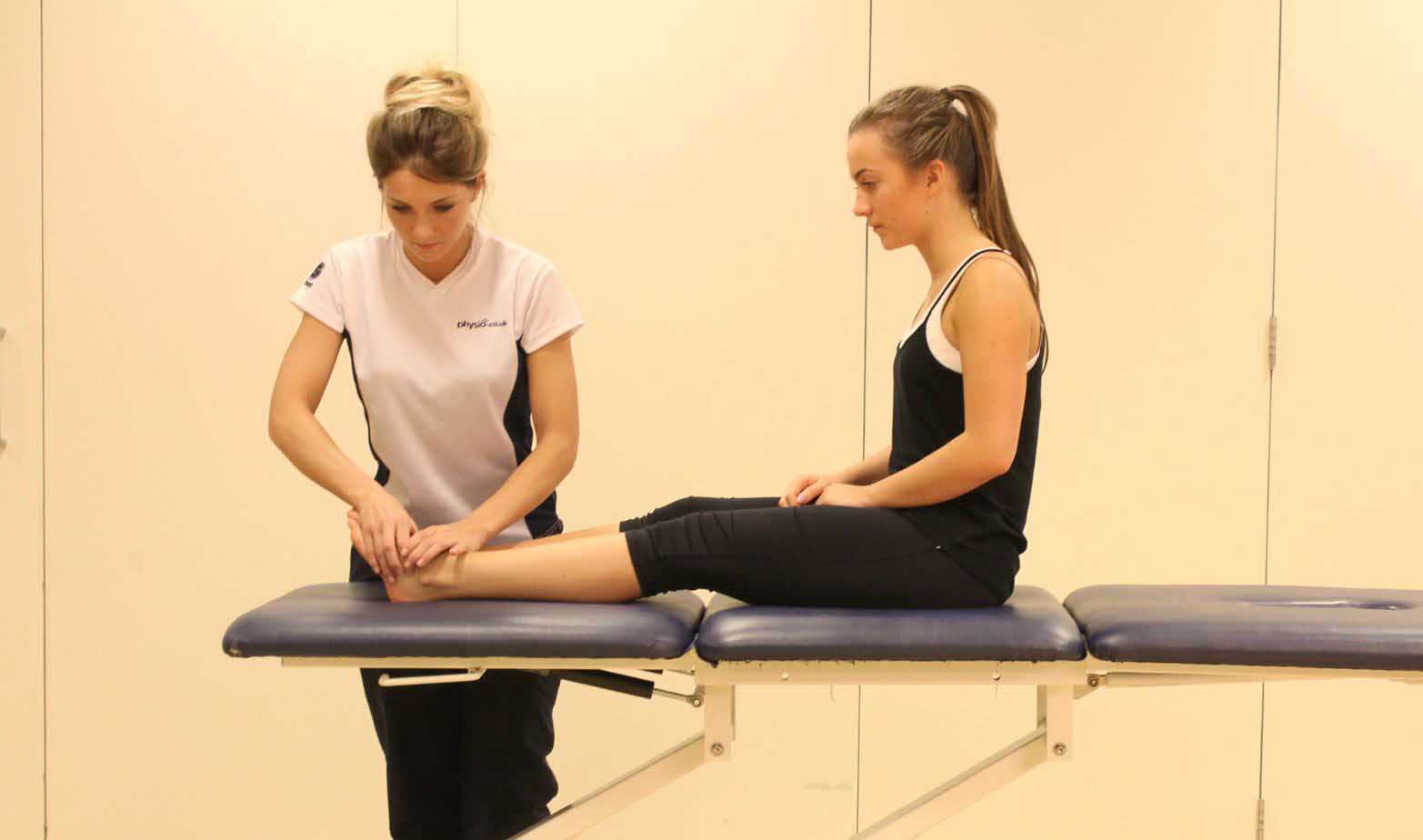What is turf toe?
Turf toe is damage to the ligaments at the metatarsophalangeal joint (big toe).
The ligaments underneath the big toe that move it make it move downwards travel along the bottom of the foot across the metatarsophalangeal joint. Damage to these ligaments is known as turf toe.
 Above: Soft tissue massage applied to the bones and connective tissue on the anterior portion of the foot
Above: Soft tissue massage applied to the bones and connective tissue on the anterior portion of the footHow does turf toe happen?
Turf toe occurs most commonly in sport. When the footwear grips the surface and body weight moves forwards over the foot, the footwear can get stuck on the surface. This effectively bends the metatarsophalangeal joint upwards. In a sporting situation this can happen very suddenly which overstretches the ligaments and causes damage to them known as turf toe.
Turf toe is more common on artificial surfaces as they are designed to take footwear with higher levels of grip. Turf toe is also more common with some modern flexible footwear that, whilst being more lightweight and flexible, does not provide the foot with much stability and, therefore, increases the chance of the toe bending.
What are the symptoms of turf toe?
As turf toe is a sudden injury, there is an immediate onset of pain. There may also be a feeling of a ‘pop’ at the big toe. Afterwards, symptoms may include:
- Pain at the joint of the big toe
- Swelling at the big toe
- Pain and tenderness when bending the big toe upwards (stretching the ligaments) or downwards (using the ligaments)
What should I do if I have turf toe?
If you have or suspect you have turf toe, you should consult a physiotherapist as they will be able to reduce the healing time and rehabilitate the big toe to return it to normal function. In the meantime you can apply ice to the toe using a bag of frozen peas or crushed ice wrapped in a damp cloth for 15–20 minutes over the toe every 1–2 hours.
What shouldn’t I do if I have turf toe?
If you have or suspect you have turf toe, you should not continue sporting activities as this will put load through the damaged ligaments and potentially make the problem worse. The ligaments need to be rested to allow them to heal.
 Above: Stability training for the foot and ankle supervised by an experienced physiotherapist
Above: Stability training for the foot and ankle supervised by an experienced physiotherapistPhysiotherapy treatment for turf toe.
Physiotherapy can be very effective in the treatment of turf toe. Treatment initially focuses on reducing pain and swelling before the toe is rehabilitated to return it to normal function. Treatment may include:
- Crutches to reduce weight bearing if the injury is severe
- Soft tissue techniques
- Electrotherapy
- Taping or bracing
- Stretching exercises
- Strengthening exercises
- Education on footwear and activity
Could there be any long-term effects from turf toe?
As long as physiotherapy treatment and advice is followed then a full recovery should be made and you should be able to return to sporting activity. If good footwear is used and physiotherapy advice is followed then the chances of reoccurrence are reduced.
Please call Physio.co.uk on 0330 088 7800 to arrange an appointment or book online today.

 0330 088 7800
0330 088 7800

































